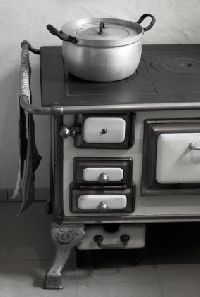
A pellet stove can be a very good option for home heating.
With winter fast approaching, we are all faced with the prospect of heating our homes. Gas or electric? Wood stove or radiant heat? Which method is best for our home? Which is most economical? There are many different options for home heating available, including the pellet stove.
The History of the Pellet Stove
Pellet stoves were first introduced in 1973 during an oil crisis, and they remain a popular alternative for heating to this day. A pellet stove is an electric appliance that burns compressed wood or biomass pellets. Biomass is living or formerly living material such as plants that can be used for fuel.
A pellet stove has a storage area called a hopper that slowly feeds pellets into the burning area. It creates a constant source of heat. Unlike a wood-burning stove, it requires very little maintenance.
~
How They Work
Pellet stoves can be free-standing or they can be inserted into an existing fireplace and chimney system. They are usually self-starting, using a thermostat to control when it turns on and off just like a regular furnace. Pellet stoves are equipped with fans to circulate heat and also heat sensors that will trigger an automatic shutoff if the stove overheats, malfunctions or becomes unsafe.
Pellet stoves are considered more safe than wood-burning stoves because burning wood creates creosote, a greasy by-product that is the cause of many chimney fires. When the pellet fuel in a pellet stove burns, it leaves behind only a fine ash and the higher grades of pellets leave very little behind. Lower grade pellets are less expensive but require the stove to be cleaned out more often.
A pellet stove is a viable alternative for heating your home. Keep in mind, however, that increased demand for pellets and the shut-down of some factories have caused pellet prices to rise. When considering your home heating needs, make sure you take the current price of pellets into account.

